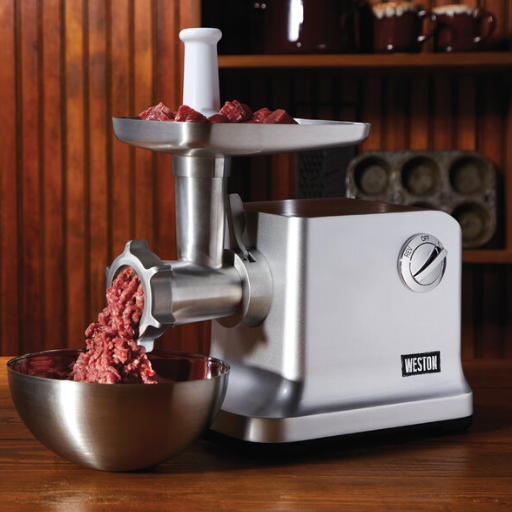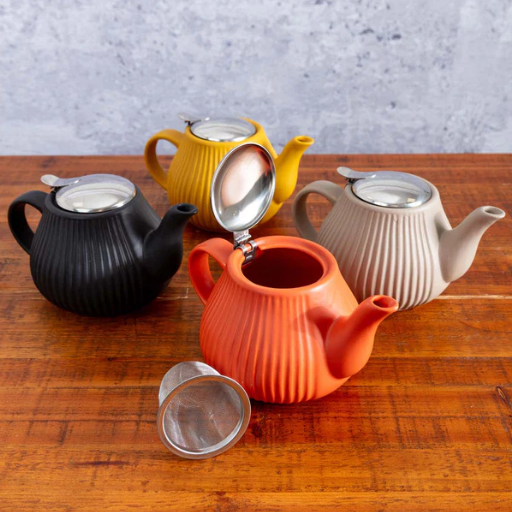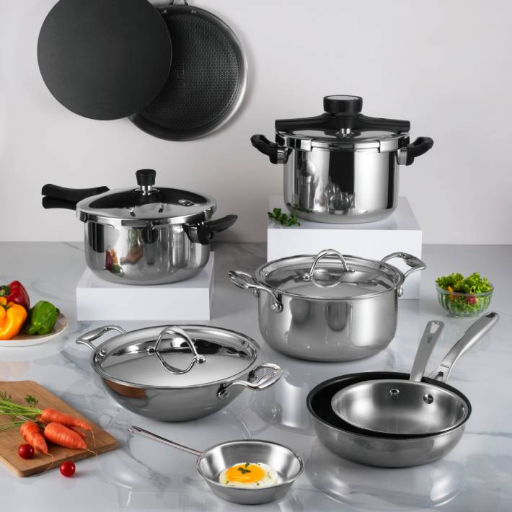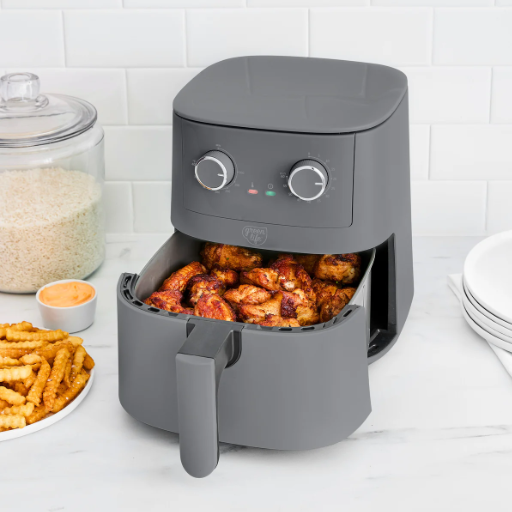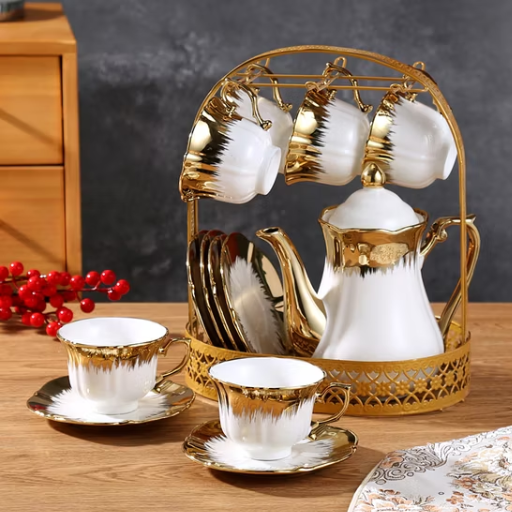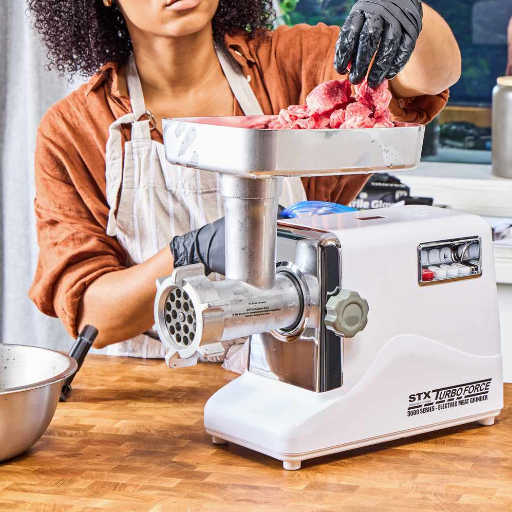When it comes to enjoying a robust, flavorful cup of coffee in the great outdoors, graniteware coffee pots stand as a tried-and-true favorite. Renowned for their durability, heritage, and rustic appeal, these iconic pots have been a staple of camping trips and cowboy gatherings for generations. This article dives into the unique characteristics of graniteware coffee pots, their historical significance, and why they remain a popular choice for outdoor coffee enthusiasts today. Whether you’re a seasoned camper or someone looking to experience the nostalgic charm of “cowboy coffee,” this guide will provide insights into the practical benefits and timeless allure of graniteware. From tips on how to use them to a closer look at why they’ve stood the test of time, let’s explore what makes these versatile coffee pots an essential for your next adventure.
What is a graniteware coffee pot and how does it work?

A graniteware coffee pot is a durable and lightweight vessel made of steel coated with porcelain enamel, renowned for its heat resistance and practicality. Its construction allows it to evenly distribute heat, making it ideal for brewing coffee over an open flame or stovetop. To use, simply add water, coffee grounds, and heat the pot until it reaches the desired strength. The design ensures reliable performance, making it a favorite for outdoor enthusiasts and traditionalists alike.
Understanding the composition of graniteware
Graniteware is a type of enamelware that features a carbon steel core coated with a layer of porcelain enamel. This combination results in a durable yet lightweight material that is both heat-resistant and non-reactive. The carbon steel provides strength and even heat distribution, while the porcelain enamel coating ensures a smooth, non-porous surface that resists scratching, rusting, and flavor transfer. Historically popular for cookware, graniteware is prized for its ease of cleaning and ability to withstand high temperatures, making it both practical and versatile for various cooking methods, whether on a stovetop, in the oven, or over an open flame.
The percolation process in graniteware coffee pots
The percolation process in graniteware coffee pots is a straightforward yet effective brewing method. It begins by filling the pot’s base with water, placing coarsely ground coffee into the perforated basket, and assembling the device with the stem connecting the basket to the base. When heated, water in the base boils, creating steam pressure that forces hot water upward through the stem. The hot water rains down over the coffee grounds, extracting flavors and oils, and repeats the cycle until the desired strength is achieved. This method is favored for its simplicity and the robust, rich coffee it produces. Additionally, graniteware coffee pots are valued for their durability and ability to distribute heat evenly, ensuring consistent percolation.
Benefits of using enameled steel for coffee brewing
Enameled steel coffee pots offer a variety of advantages that make them an excellent choice for brewing. First, the enamel coating provides a non-reactive surface, ensuring that the coffee’s flavor remains pure and untainted by metallic taste, which can occur with other materials. Second, these pots are highly durable, resistant to rust, chips, and scratches, making them ideal for both indoor and outdoor use. Additionally, enameled steel distributes heat evenly, allowing for consistent brewing and optimal extraction of coffee flavors. They are also lightweight yet sturdy, making them easy to handle without compromising durability. Lastly, enameled steel is easy to clean, as the smooth surface prevents coffee residue from sticking, ensuring hassle-free maintenance and longevity.
How to choose the right graniteware coffee pot for your needs?

Capacity – Consider the number of people you’ll be serving. Choose a pot size that meets your daily or occasion-specific brewing needs without being too large or small.
Design and Features – Look for features like a well-fitting lid, spout design for easy pouring, and a sturdy handle for safe handling. A classic design often ensures timeless functionality.
Compatibility – Ensure the coffee pot is compatible with your heat source, whether it’s a stovetop, campfire, or electric burner.
Durability – Check for high-quality enameling and a solid base to ensure long-lasting use, especially if you plan to use it outdoors.
Ease of Cleaning – Opt for a pot with a smooth surface and minimal crevices, as this will make cleaning more convenient.
By assessing these factors, you’ll be able to find a graniteware coffee pot that fits both your lifestyle and brewing preferences effectively.
Capacity considerations: from 8 cup to 12 cup options
When choosing between 8-cup and 12-cup graniteware coffee pots, your decision should hinge on your specific needs and usage habits. An 8-cup option is ideal for smaller households or occasional use, offering quicker brewing times and less waste. On the other hand, a 12-cup pot is better suited for larger families, gatherings, or avid coffee drinkers, providing the capacity to serve more people in one brewing cycle. Additionally, keep in mind that the actual “cup measurement” may differ between brands, with some defining a cup as 6 ounces instead of the typical 8 ounces. Assess your daily coffee consumption and hosting requirements to determine which size aligns best with your lifestyle.
Color variations: gray, white, and speckled graniteware
When choosing between gray, white, and speckled graniteware, it’s essential to consider both aesthetic preferences and practical uses. Gray enameled graniteware offers a modern, neutral appeal that blends seamlessly with various kitchen designs. White graniteware, on the other hand, exudes a clean, minimalist look and pairs beautifully with a farmhouse or vintage aesthetic, though it might show stains more prominently over time. Speckled graniteware, often seen as the quintessential classic style, brings a rustic charm and hides minor blemishes or scratches effectively, making it ideal for everyday or outdoor use. Each variation provides durability and functionality, so the choice largely depends on your kitchen’s decor and personal taste.
Evaluating quality and durability in enamelware coffee pots
When evaluating the quality and durability of enamelware coffee pots, consider several key factors. First, check the thickness of the enamel coating; thicker coatings tend to resist chipping and cracking better, ensuring long-term durability. Next, examine the base material beneath the enamel, often steel or cast iron, which provides strength and stability. High-quality enamelware features smooth, even finishes without noticeable imperfections like bubbles or cracks, which could weaken the item over time. Additionally, reviews and user feedback frequently highlight resistance to high heat and the ability to maintain color and shine after repeated use. Lastly, ensure that the enamelware is dishwasher-safe or easy to clean by hand to preserve its longevity.
What are the best ways to use a graniteware coffee pot for camping?

Since graniteware coffee pots are camping friendly, they are often selected because of their simplicity and easy maintenance. To prepare coffee in a graniteware pot, first set it over an open fire or a camping stove, with the required amount of water in the pot. Pour the desired amount of coffee grounds in and stir if you do not have a filter basket. You can also put water in the pot then add ground coffee. The pot can be placed on a burner or stove and propane. After turning on the heat, allow for the water to boil and steep into the pot for further minutes. The coffee can be savored best when the water has boiled into simmering bubbles. While the brew effectiveness ensures coffee withe sediment is not added to the pot without a filter, special care should be taken while removing the beverage, especially without a filter. Coffee lovers can relish on their favorite drink. Due to graniteware’s unmatched heat efficiency, the coffee will always brew perfectly outdoors. Remember, it is important to exercise extreme caution and usage of heat protective gloves while using the pot because it becomes dangerously hot when used.
Brewing cowboy coffee in the great outdoors
When brewing cowboy coffee, getting the right water-to-coffee ratio is crucial. Use approximately two tablespoons of ground coffee for every eight ounces of water. For best results, use coarse coffee grounds to minimize the sediment. Start by filling your graniteware pot with the appropriate amount of water and bring it just to a boil.
Once boiling, remove the pot from the heat source to prevent over-extraction, then add your coffee grounds. Stir the mixture gently to ensure the grounds are fully saturated. Allow the coffee to steep for about 4-5 minutes, depending on your preferred strength. To settle the grounds and clarify the coffee, a common trick is to splash a small amount of cold water into the pot after steeping. This causes the grounds to drop to the bottom.
When it’s time to pour, slowly tilt the pot without shaking or stirring, and use a steady hand to avoid disturbing the settled grounds. For an even cleaner brew, you can use a strainer, cheesecloth, or fabric square over the cup. Following these steps ensures a smooth and bold cup of cowboy coffee, perfect for enjoying the outdoors.
Tips for using graniteware coffee pots on a campfire
Choose Properly: Make sure that the fire isn’t too high. It is fine if the coffee burns, but the pot will scorch if left unattended.
Start On A Low Flame: Loosening grips on the heat won’t lead to burning the pot, though fire breathing might. Shifting the heat too high won’t energize the pot, but will damage it while trying to boil water.
Gradually Increasing Temperature Is Permitted: Lesser degrees of heat will help, but scorching coffee pots over intense fire is not encouraged. Doing so while enabling incremental heating is acceptable.
Maintain Pot With Coffee: The stove can actually stay idle for the most part, but be sure to make complete pots. Ruining the pot would ruin the flavor of coffee, put it back in the pot.
Chill Then Wash: Chilling can’t be avoided, however doing so with warm water and bake-grade soap can. Avoid using anti-scratching coverings as they risk damaging the product.
Cleaning and maintaining your camp coffee pot
When it comes to maintaining your camp coffee pot, proper care guarantees it stays in good condition and enables you to brew fantastic coffee consistently. Cleaning it through the following simple steps will allow you to do just that:
Rinse Immediately After Use: Empty the coffee pot of any residue and rinse it with warm water after it cools. This will help remove any remaining coffee residue before it hardens.
Use Mild Soap and a Soft Sponge: The coffee pot’s interior and exterior needs to be cleaned with a soft sponge or cloth and mild soap. Surface abrasives like steel wool and other pot scrubbers are unacceptable, as they will grate the surface and thereby damage the longevity of your pot.
Remove Stains and Residue Naturally: If a stain persists, it is best removed with a paste created from baking soda and water. For stubborn residues, apply the paste into the pot, scrub gently, and wash it all away.
Avoid Dishwasher Cleaning: Hand cleaning as opposed to using a dishwasher is always the preferred method when dealing with camp coffee pots, through dishwashers will damage nonstick coatings, enamel, and other finishes.
Dry Thoroughly: It is crucial to wipe away any water to avoid rust/corrosion that comes from using steel or enamel-coated materialsenamel.
Are vintage and antique graniteware coffee pots worth collecting?

Yes, vintage and antique graniteware coffee pots are worth collecting for several reasons. Their unique, handcrafted designs and vibrant enamel finishes make them visually appealing and nostalgic, reflecting an era of traditional craftsmanship. They often serve as a piece of history, with some dating back to the late 19th and early 20th centuries, adding charm to any collection. Additionally, these pots can hold significant monetary value, especially rare or well-preserved pieces.
Identifying authentic antique graniteware coffee boilers
Identifying authentic antique graniteware coffee boilers requires attention to several key features. First, examine the material and finish—true graniteware is made from enamel-coated steel or iron with a speckled pattern, often in colors like blue, gray, or white. The texture should feel smooth but robust, with an aged appearance. Second, check for signs of wear consistent with age. Authentic pieces typically show chipping on the enamel and slight rusting on exposed metal, but these imperfections should not compromise the overall integrity.
Next, inspect for markings or stamps on the bottom or sides. Many antique graniteware producers, such as Savory, Agate Nickel Steel, or Lalance & Grosjean, marked their products with logos, company names, or origins. These identifiers can help confirm authenticity and trace the item’s history.
Finally, pay attention to craftsmanship details. Authentic boilers often exhibit hand-rolled handles, riveted seams, and sturdy construction indicative of 19th or early 20th-century manufacturing processes. Fakes or reproductions may lack these fine details or use modern, lighter materials. Combined, these elements can guide collectors in distinguishing genuine antique pieces from replicas.
Value and rarity of blue and white enamelware coffee pots
Blue and white enamelware coffee pots are highly sought after due to their nostalgic charm, historical significance, and aesthetic appeal. Their value is influenced by factors like age, condition, and rarity. Original pieces from the late 19th to early 20th century, particularly those with unique patterns or manufacturer markings, tend to be more valuable. Pots in excellent condition with minimal chipping or rust are especially prized by collectors. Additionally, limited-production styles or those crafted by notable manufacturers can command premium prices. Rarity plays a crucial role in valuation, with hard-to-find items being more desirable.
Caring for and restoring vintage speckled graniteware
Proper care and restoration of vintage speckled graniteware can preserve its beauty and value. To clean these items, use a mild soap and warm water with a soft sponge or cloth to avoid scratching the enamel surface. Avoid abrasive pads or harsh chemicals, as they can damage the finish. For stubborn stains or rust spots, a paste of baking soda and water can be gently applied and rinsed thoroughly.
If restoration is needed, minor chips can be filled with enamel repair kits designed for cookware, ensuring you match the color as closely as possible. Large areas of damage may require professional restoration to maintain authenticity. Always store graniteware in a dry, temperate environment to prevent rusting or further deterioration, and consider using protective padding if stacking items.
Routine maintenance and careful handling are crucial for preserving these collectibles, ensuring they remain both functional and cherished for generations.
How does graniteware compare to other coffee brewing methods?

Among coffee brewing methods, graniteware is distinguished by its strength, ease of use, and low cost. Unlike contemporary electric coffee machines, graniteware is non-electrical and is therefore ideal for camping or brewing off the grid. When compared to pour over or French press methods, graniteware offers a strong and uncomplicated brew without needing extra filters or elaborate methods. Although it may not have the finesse of espresso machines or the smoother taste associated with coffee from drip brewers, the practicality and nostalgic charm of granitware makes it popular among traditionalists.
Graniteware vs. modern electric coffee makers
When comparing graniteware to modern electric coffee makers, several key differences emerge that cater to varying needs and preferences. Graniteware offers simplicity and reliability, as it does not require electricity, making it ideal for outdoor enthusiasts and off-grid living. It is also budget-friendly compared to the higher costs of most electric coffee makers. Additionally, graniteware is celebrated for its timeless design and the ability to produce strong, bold-flavored coffee with minimal effort.
On the other hand, modern electric coffee makers excel in convenience and efficiency. They often feature programmable settings, temperature controls, and the ability to brew multiple cups at once, saving both time and effort. Electric models also generally produce a more consistent and smoother brew, thanks to advanced technologies. However, they are dependent on electricity, less portable, and typically require more maintenance, including cleaning small components like filters and reservoirs.
Ultimately, the decision between graniteware and modern electric coffee makers depends on personal priorities, whether it’s the charm of traditional brewing or the ease and precision of modern appliances.
Comparing graniteware to cast iron coffee pots
When comparing graniteware to cast iron coffee pots, both have their unique advantages and appeal. Graniteware coffee pots are lightweight, affordable, and known for their efficient heat conduction, making them ideal for quick brewing over a stove or campfire. They are also easy to clean, often featuring a durable enamel-coated surface that resists stains and rust.
On the other hand, cast iron coffee pots are praised for their superior durability and ability to retain heat for extended periods, which is perfect for slow brewing and consistently hot coffee. Cast iron pots develop a naturally non-stick surface over time, especially when seasoned properly, but they require more maintenance to prevent rust and ensure longevity.
While graniteware provides convenience and portability, cast iron offers robustness and versatility in brewing styles, making the choice largely dependent on personal preferences and intended use.
The unique flavor profile of coffee brewed in enamel pots
Coffee brewed in enamel pots is often celebrated for its clean and smooth flavor profile. The enamel coating prevents any interaction between the coffee and the material of the pot, ensuring that the flavor remains pure and free from metallic or other undesired tastes. Additionally, enamel pots provide even heat distribution, which helps extract a balanced and consistent flavor from the coffee grounds. This method is particularly suited for those who enjoy the unadulterated essence of their coffee, allowing the natural characteristics of the beans to shine. However, because enamel pots do not impart additional flavors, the quality of the coffee grounds plays a key role in determining the final taste.
References
Frequently Asked Questions (FAQ)
Q: What makes a graniteware coffee pot ideal for camping?
A: Graniteware coffee pots are lightweight, durable, and can be used directly on a stove or fire, making them perfect for camping. Their enamel coating helps distribute heat evenly, ensuring a great cup of coffee even in the great outdoors.
Q: How do you use a graniteware coffee percolator?
A: To use a graniteware coffee percolator, fill the pot with water, add ground coffee to the basket, and place the percolator on a heat source. As the water heats, it cycles through the coffee grounds, brewing a rich and flavorful cup.
Q: What is the advantage of an enamel coffee pot over other materials?
A: Enamel coffee pots are non-reactive, which means they don’t alter the flavor of your coffee. They are also easy to clean and maintain, and their enamel coating provides an attractive, glossy finish that is resistant to rust and scratches.
Q: Can I use a graniteware coffee pot on an induction stove?
A: Most graniteware coffee pots are not suitable for induction stoves because they are typically made of enameled steel. However, you can check the manufacturer’s specifications to see if your specific pot is compatible with induction cooking.
Q: What is the difference between a cowboy coffee pot and a percolator?
A: A cowboy coffee pot is typically used to brew coffee by boiling water and allowing the grounds to steep, whereas a percolator cycles hot water through the coffee grounds multiple times to extract flavor. Both methods produce strong, robust coffee.
Q: How do I clean my vintage speckled graniteware coffee pot?
A: To clean a vintage speckled graniteware coffee pot, avoid abrasive scrubbers that might damage the enamel. Use a soft sponge with warm, soapy water, and rinse thoroughly. For stubborn stains, a mixture of baking soda and water can be effective.
Q: What are the common sizes available for graniteware coffee pots?
A: Graniteware coffee pots come in various sizes, with common capacities including 8 cups, 12 cups, and even larger pots like the granite ware 3 qt coffee boiler, making them suitable for different needs and group sizes.
Q: Are graniteware enamel coffee pots safe for health?
A: Yes, graniteware enamel coffee pots are safe for health as they are free from harmful chemicals like PTFE and PFOA. The enamel coating is non-reactive, ensuring that no unwanted flavors or chemicals leach into your coffee.
Q: What is the appeal of a blue swirl graniteware coffee pot?
A: The blue swirl pattern is a classic design that adds a vintage charm to your kitchen or campsite. It’s not only aesthetically pleasing but also retains the functional benefits of graniteware, such as durability and effective heat distribution.
Q: Can I use my graniteware coffee pot to make tea?
A: Yes, you can use a graniteware coffee pot to make tea. Simply boil water in the pot and steep your tea leaves or tea bags as you would normally. The pot’s excellent heat retention makes it suitable for brewing both coffee and tea.

